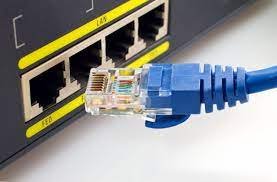Ethernet cables are not created equal. As such, you will need to consider various things to ensure that you have the right Ethernet cable that suits your specific needs.
This article will show you how to choose the right Ethernet cable for the job. But before getting into that, let’s start with the basics.
Ethernet Cable Types Explained
Before deciding which Ethernet cable works for you, it’s important to understand the different types of Ethernet cables. When searching for Ethernet cable, the most common term you’ll come across is “CAT.” Cat refers to “category”. Categories are the names that differentiate the different versions of an Ethernet cable.
Each Ethernet cable category gives you a clue of the maximum speed and bandwidth you should expect. For this, Ethernet cable versions are easy to understand; The larger the category number, the higher the transmission speed and bandwidth. So, Cat 7 Ethernet cable is better than Cat 5 cable.
Here is a breakdown of the different Ethernet cable categories and their respective transmission speeds and bandwidths (also known as frequencies).
From the Ethernet categories listed above, everything from Cat 1 to Cat 5 is obsolete. In fact, those cables are hard to come by these days. When shopping for an Ethernet cable, you’ll see Cat 5e and above.
The good news is that Ethernet cables are backward compatible because they use the same RJ45 connector, usually as the Ethernet port. So if you want to ditch your old cable for a new one, don’t worry about the RJ45 mumbo jumbo. The new cables will still work with your current port.
Things to consider when buying an Ethernet cable
Buying the latest cable category is an easy way to do this when buying Ethernet cables. In this case, as of March 2022, Cat 8 is the latest Ethernet cable category, providing faster transmission speeds and the highest bandwidth. But it may be overkill for your needs and even worse, it won’t be cheap.
As a result, buying a suitable Ethernet cable doesn’t fall into the only category. Understanding the key features of the different Ethernet categories is just a base. Knowing your needs is the remainder of the puzzle. To understand the last bit, let’s discuss four key features that can help you choose a cable that best suits your needs.
1. Maximum Cable Transmission Capacity
The table above shows that each Ethernet cable category has its maximum transmission capacity. Maximum transmission capacity refers to the maximum transfer speed of the cable. If you need to transfer a lot of data through your wired connection, you should choose a cable with adequate carrying capacity.
For example, if you’re someone who shoots and edits high-resolution video, you’ll at least benefit from opting for a Cat 6a Ethernet cable.
Choosing the latest categories in Video Editing Studio will obviously save more time. And if you are of gaming type, then you need a cable with high bandwidth and high data transfer speed. See our list of the best Ethernet cables for gaming for specific recommendations.
2. Your required cable length
Another important thing to consider is the length of your wired connection. It is important to note that each Ethernet range has a certain maximum transmission capacity that can be achieved over a certain length of time. In other words, you can only achieve those top speeds for a given length of time.
For example, Cat 6a cable has a maximum data rate of 10Gbps to 180ft. In addition, the maximum attainable transmission speed will be reduced. In short, the longer the cable length relative to the optimum cable length for maximum data rates, the lower the maximum transmission speed.
Keeping this in mind, if you need to transfer data over long distances via Ethernet, you should go for a cable that has a higher maximum data rate to compensate for the transmission distance. Let’s use Cat 7a cable as an example.
It tops out at 100Gbps by 49 feet, but at 164 feet, the maximum speed drops to 40Gbps. And at 328 feet, the maximum attainable speed is 10Gbps—still better than what you’ll get with Cat 5e cable at the same length.
3. Internet Speed
Your internet speed also matters. Buying a Cat 7a Ethernet cable with data rates up to 100Gbps while your Internet connection tops out at 1Gbps is nothing short of overkill. For starters, three things determine the speed of your wired connection: the transmission capacity of your cable, the speed of the router, and the capabilities of your equipment.
If you plan to use your cable to connect to the Internet, your speed will be a major factor in influencing what you go with. Here is a step-by-step guide on how to check your internet speed. If your router is the problem, we have suggestions for improving your router’s speed. Remember, it doesn’t hurt to future-proof your network for future speed upgrades.
